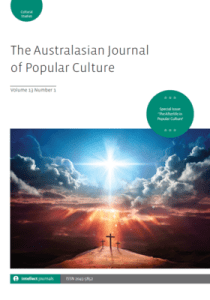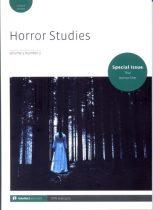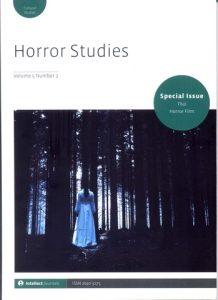2013
 If we agree that globalization translates into a quick and massive flow of capital, people, products, services and ideas across borders then cinema has been a global enterprise since its very beginnings. While local film industries may not share the global distributing potential of Hollywood, this does not mean that their production and post-production methods lag behind. The case of Thai film is not so different here, negotiating the dynamics of the global (e.g. filming equipment, skilled crew, or distribution formats) and the local (e.g. conceptualization, scriptwriting, or narrative formation). Contemporary Thai horror film has long been Thailand’s calling card on international film markets. Known in Thai as nang phi (ghost films), the films remain faithful to their narrow supernatural formula focusing most commonly on the figure of a vindictive phi tai hong (a spirit of the violently dead). Recently, however, the familiar anthropomorphic renditions of ghosts known from older Thai horror films seem to undergo the steady process of de-materialization and de-literalization, challenged through the intervention of technology and reappearing as critically constructed metaphors. This article argues that this change in the way these ghosts are portrayed on film can be seen as a result of the increasing globalization of Thai film industry per se, as well as a reflection on the broader economic, political and social transformations brought about by the powers of globalization in Thailand.
If we agree that globalization translates into a quick and massive flow of capital, people, products, services and ideas across borders then cinema has been a global enterprise since its very beginnings. While local film industries may not share the global distributing potential of Hollywood, this does not mean that their production and post-production methods lag behind. The case of Thai film is not so different here, negotiating the dynamics of the global (e.g. filming equipment, skilled crew, or distribution formats) and the local (e.g. conceptualization, scriptwriting, or narrative formation). Contemporary Thai horror film has long been Thailand’s calling card on international film markets. Known in Thai as nang phi (ghost films), the films remain faithful to their narrow supernatural formula focusing most commonly on the figure of a vindictive phi tai hong (a spirit of the violently dead). Recently, however, the familiar anthropomorphic renditions of ghosts known from older Thai horror films seem to undergo the steady process of de-materialization and de-literalization, challenged through the intervention of technology and reappearing as critically constructed metaphors. This article argues that this change in the way these ghosts are portrayed on film can be seen as a result of the increasing globalization of Thai film industry per se, as well as a reflection on the broader economic, political and social transformations brought about by the powers of globalization in Thailand.



 Gothic has long been theorized as the domain of the feminine, the queer or the ‘soft masculine’, and most discussions of Gothic masculinity propose to see it in terms of a split of the masculine subject at the level of rationality and sexuality. This article examines the construction of Gothic masculinities in the films of the Thai director Kongkiat Khomsiri in the context of the Thai gender system and Thai heroic masculine ideologies their protagonists embody. While Thai horror films abound in depictions of feminine evil, interestingly the Gothic cinescapes of Khomsiri are the domain of tough masculine men. The article discusses the director’s first three features: Chaiya (2007), Slice (2009), and The Gangster (2012), bringing into focus the films’ portrayals of their working-class underdog heroes and their ‘hard’ masculinity. The discussion also highlights the visual aesthetics of Khomsiri’s films and their reliance on the Gothic conventions in the construction of the characters and the environments they inhabit.
Gothic has long been theorized as the domain of the feminine, the queer or the ‘soft masculine’, and most discussions of Gothic masculinity propose to see it in terms of a split of the masculine subject at the level of rationality and sexuality. This article examines the construction of Gothic masculinities in the films of the Thai director Kongkiat Khomsiri in the context of the Thai gender system and Thai heroic masculine ideologies their protagonists embody. While Thai horror films abound in depictions of feminine evil, interestingly the Gothic cinescapes of Khomsiri are the domain of tough masculine men. The article discusses the director’s first three features: Chaiya (2007), Slice (2009), and The Gangster (2012), bringing into focus the films’ portrayals of their working-class underdog heroes and their ‘hard’ masculinity. The discussion also highlights the visual aesthetics of Khomsiri’s films and their reliance on the Gothic conventions in the construction of the characters and the environments they inhabit.
